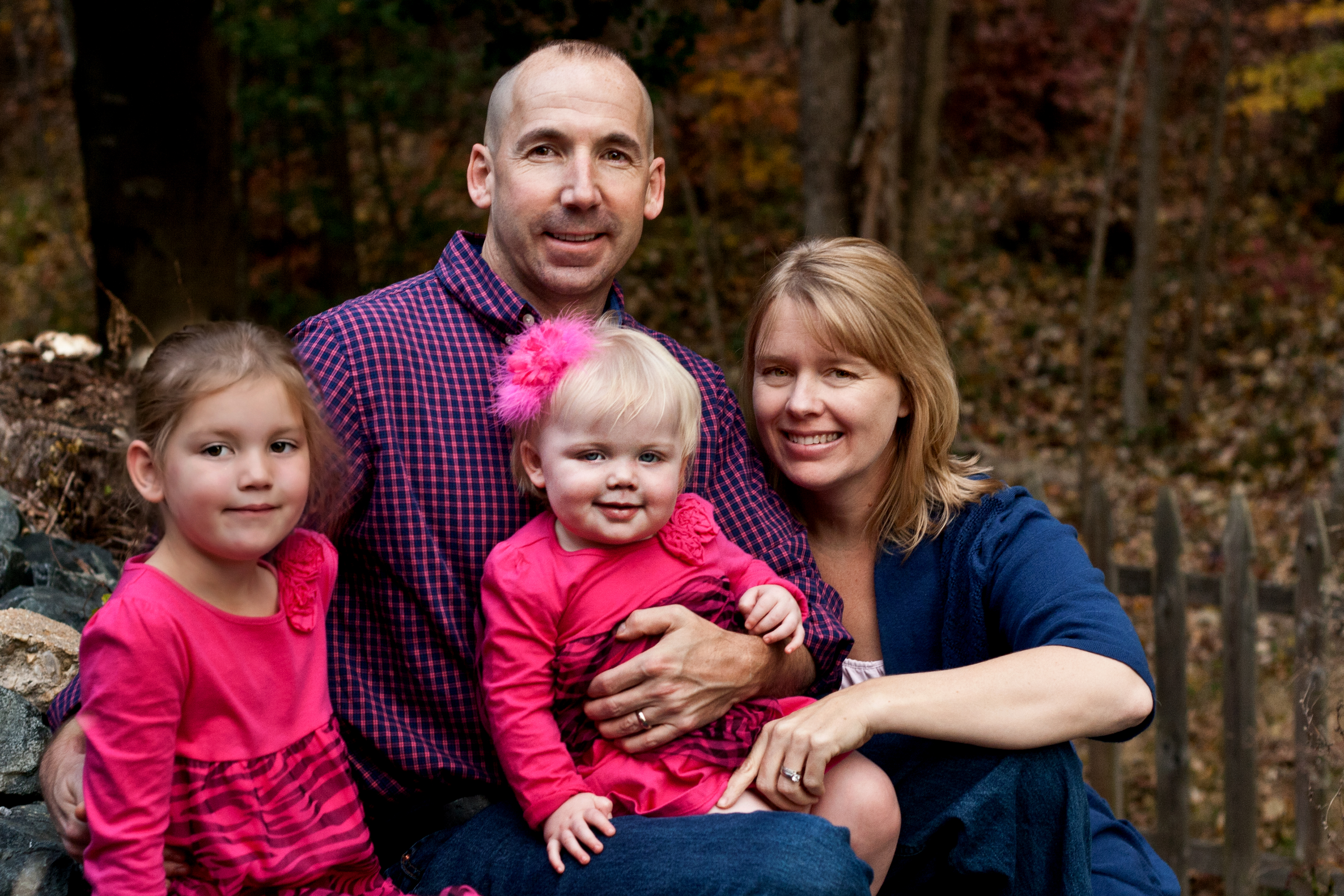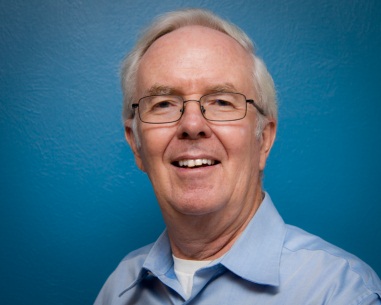ONDCP Blog
What I Am Thankful for this Holiday Season
Posted by on December 12, 2012 at 3:17 PM EDTAs winter approaches, the trees are bare except for a few remaining leaves dangling from their branches. Blowing in the wind are only shadows of the rich green shapes that have dried and fallen to the ground.
A tree losing its leaves is a good metaphor for the effects of addiction. Drugs and alcohol strip away just about everything leaving only shadows of the original self. At first, the high is so pleasurable that all seems well, but gradually the seasons change.
I don’t recall the moment when I crossed the line into addiction. I only know that alcohol eventually became the central focus of my life. Sitting in jail, I was dazed by the night’s events. Would things get better? Could I change? What was going to happen? Should I end it all? These were the questions spinning around in my head after my arrest for driving under the influence (DUI). Earlier that night, I entered a freeway traveling southbound in a northbound lane. Realizing the signs were facing the opposite direction, I tried to turn around but ended up in a ditch.
Years before, I was so proud when I graduated from boot camp. Marching across the parade deck filled me with hope, ambition, and a desire to succeed. There I sat wondering what would become of me now, but fortunately God had a plan. My incident required a mandatory dependency screening, which came back no-diagnosis. Fearing the repercussions on my career, I lied out of self-preservation on just about every question but my name. My job was one of the few remaining leaves hanging on a limb.
Without a diagnosis, the military had limited options to get me help. My supervisor—a man I have come to regard as a personal hero—introduced me to recovery-based support groups. Sitting across from me after my DUI, he must have seen something worth saving.
Compassion is an emotion one never fully appreciates until one receives it from another. My supervisor could have thrown the book at me. Instead, he chose a different path and adopted a wait-and-see approach. As long as I took recovery seriously, he refrained from imposing punishment. Thirty days turned into a year, then two, then three.
The evolution of recovery is much like a tree budding in the spring. The depths of mental darkness to which drugs and alcohol can take a person are indescribable. Addiction ravaged my soul. In recovery, I learned that one has to heal internally before he can really begin to grow. Recovery helped me clean house from the inside out, and I began to take responsibility for my life.
My experience placed me in a position to pass along to others the opportunities that were provided to me. People tend to view a person who has reached bottom through the lens of what brought the abuse to everyone's attention. I see them through the eyes of one who knows what recovery can make possible.
Eleven years ago, I was a Second Class Petty Officer sitting in jail without hope, without a plan, without a future. Following recovery, I have gone on to have a successful career. I served as an Information Technology Regional Systems Manager. I deployed to the Middle East as Chief of a Combat Information Center and completed an operational tour for a Tactical Maritime Safety and Security Team as a Planning Officer. Currently, I support the mission of the Office of National Drug Control Policy.
Midway through a master’s program in mental health counseling, I now have a better understanding of the physiological, psychological, and sociological issues surrounding addiction. I often think of the support I received, and the course my life may have taken without it. Most notably, I think about what might not have been – how I never would have met my wife or have been blessed with our two little girls.

I am thankful for the second chance I did not deserve. I am thankful for my supervisor, who reached out and guided me toward help, and for the recovery programs created by others before me. I am thankful for God’s grace, my family, and our country. Recovery is not only possible; it is likely when good people are there to help. A tree that sheds its leaves still has a world of potential within.
Learn more aboutNation’s Prison and Jail Populations Drop for Third Straight Year
Posted by on December 5, 2012 at 1:24 PM EDTCriminal justice reform is an important component of our effort to implement a 21st century approach to drug policy. While law enforcement will always play a role in combating drug-related crime, we cannot arrest and incarcerate our way out of the drug problem. Fortunately, some important data released last week show there are some promising trends when it comes to the high rates of incarceration in the United States.
According to the Bureau of Justice Statistics, the number of inmates behind bars in the United States dropped in 2011 for the third straight year, falling to about 2.24 million from a peak of 2,307,500 in 2008. The report also found that the number of Americans under any kind of “correctional supervision”—a catch-all term that includes prisons, jails, probation, and parole—fell for the third year in a row.
Our National Drug Control Strategy contains an array of action items aimed at reducing the burdens that drug use and its consequences impose on our communities. Among them are efforts to divert non-violent drug offenders into treatment instead of prison, expanding access to drug treatment for incarcerated individuals, and implementing effective reentry programs to break the vicious cycle of drug use, crime, incarceration, and rearrest.
Learn more aboutJoin the Chorus of Voices Speaking Out Against Drugged Driving
Posted by on December 3, 2012 at 1:39 PM EDTOur world changed in 2010 after the death of our 33-year-old son, Brian. Two women, drugged on marijuana, methamphetamine, and heroin, were driving an SUV that crossed into Brian’s lane. While changing her sweater, the driver turned the steering wheel over to a passenger. Therefore, both were charged as vehicle operators. The SUV went airborne and crashed through Brian’s windshield. Three men lost their lives that night. Brian’s pregnant widow sustained grave injuries from which she is not likely to recover.
After the collision, my education began on the nature of drugged driving trials. I learned it is profoundly difficult to successfully convict someone of driving under the influence of drugs. Drunk drivers can be convicted predictably, in part due to per se laws that prohibit driving with more than 0.08 grams per deciliter of alcohol in the driver’s blood. Yet there are no similar per se laws for drugs in most of the United States, even though it’s much more difficult to prove drug impairment than alcohol impairment.
During the trial of Brian’s killers, the defense attorney said, “It’s not unlawful to drive with illegal drugs in your body.” That shocking statement is true in most of the country. The women were convicted of vehicular homicide and assault, but the verdict was based on driving with disregard for the safety of others rather than on driving under the influence of drugs. Assuming standard parole, they probably will serve only 18 months in prison per homicide.
I now direct Deception Pass 3, a network of drugged-driving victims who have joined me in an effort to enact drugged-driving legislation. Our primary focus is to bring effective drug per se laws to the 33 states that don’t yet have them. We enjoy the support of many experts and consultants. We encourage drugged driving victims to contact us. Your voice can be heard.
 Learn more about
Learn more aboutNational Impaired Driving Prevention Month
Posted by on December 1, 2012 at 2:00 PM EDTDecember is National Impaired Driving Prevention Month – a time to focus our efforts toward recognizing the risks and reducing the prevalence of drugged driving. The Office of National Drug Control Policy (ONDCP) is proud to join Administrator David Strickland and the staff of the National Highway Traffic Safety Administration (NHTSA) in observing National Impaired Driving Prevention Month and working to stop drugged driving all year long.
Drugged driving presents a deadly risk to everyone on the road. According to NHTSA’s Fatality Analysis Reporting System (FARS), 1 in 3 drivers who were killed in a motor vehicle crash in 2010 with known test results tested positive for drugs (illicit substances as well as over-the-counter and prescription medications).[1] Additional FARS data showed that while the overall number of drivers killed in motor vehicle crashes in the United States has declined, involvement of drugs in fatal crashes increased by 6 percentage points over the past 6 years.
We commend efforts by individuals, communities, and states to combat these risks and work toward improving our public health and safety. One such individual is Ed Wood, who is recognized as one of ONDCP’s Advocates for Action because of his work promoting drugged driving laws and drug per se legislation, which he began pursuing after his son was killed by a drugged driver. ONDCP urges all states to adopt drug per se laws. We also applaud state efforts such as California’s recent signing of Assembly Bill 2552, which, when enacted in 2014, will differentiate between drunk driving, drugged driving, and driving under the combined influence of drugs and alcohol.
While these endeavors are valuable steps toward decreasing the risks of drugged driving, there is much more we can and must do. I look forward to working with Administrator Strickland throughout December to make the most of National Impaired Driving Prevention Month, and I encourage you to get involved, as well.
Learn about NHTSA’s campaigns Buzzed Driving is Drunk Driving and Drive Sober or Get Pulled Over, and visit our Drugged Driving page for additional information. We hope you will spread awareness about drugged driving and encourage your family and friends to “drive with reason” this holiday season.
[1] U.S. Department of Transportation, National Highway Traffic Safety Administration. Drug Involvement of Fatally Injured Drivers (November 2010). 2010 statistics are from unpublished ONDCP tabulations of data from the Fatality Analysis Reporting System (October 2012).
Learn more aboutWhen a Coach is More than a Coach
Posted by on November 29, 2012 at 12:32 PM EDTIn suburban Virginia, 50 high school athletes trickle onto the field and don their soccer cleats and practice jerseys. The coach pulls the players together and gives them the plan for the day. Soon the players are in action, running, kicking, yelling, joking, and happy to be doing what they love most.

Half an hour into practice, another player arrives and walks slowly onto the field, frowning and clearly distracted. He approaches the coach and says he’s late because he got in trouble at school. The conversation could have ended there, perhaps with punitive laps around the field. Fortunately, the coach does not let the matter drop. He senses something is amiss and knows this could be a perfect time to use his role as an adult influencer to make a positive difference in a young man’s life.
Mindful of the special relationship between players and coaches, and recognizing that sports provide opportunities for coaches to talk to students about important issues such as drug use, the Virginia High School League (VHSL) requires every coach to complete a challenging online course that emphasizes the principles of positive coaching. This training, detailed in the VHSL Handbook and Policy Manual, is necessary for certification as a coach at all Virginia public high schools and at private Virginia high schools that are VHSL members. Every coach must complete the course and pass a test to confirm his or her understanding of the material. Woven into the program is information on developing skills for educating students and their parents about the harmful effects of alcohol and drug abuse. The course also provides examples of how best to communicate with student athletes and how to make sure they not only hear the message, but fully comprehend and accept it.
Coaches influence a large and growing number of students in America. For 22 consecutive years, the number of high school students playing sports has exceeded the previous year’s total, according to the annual High School Athletics Participation Survey, released recently by the National Federation of State High School Associations. More than 7.6 million students played sports during the 2010-2011 school year, an increase of nearly 40,000 students compared to 2009-2010. The organization estimates that 55.5 percent of all high school students participate in sports.
Back on the practice field, the coach pulls the late-arriving player aside. He asks the young man about the trouble he’s in, all the while watching for clues in the player’s words and demeanor. Could it be substance abuse? At this moment, he is more than a soccer coach. He is mentor, counselor, friend, and concerned adult. His brief, targeted intervention is mindful of the lessons learned in the VHSL coaching course on recognizing the signs of drug use and how best to deliver messages that matter.
As it turns out, the young athlete’s trouble was minor and had nothing to do with drugs. Satisfied that no further action is necessary, the coach sends the player out to join his teammates on the field. It was a short conversation, over in minutes. But sometimes that is all it takes to make a meaningful, enduring impact in a young person’s life.
Michael Reles, a Budget Analyst at ONDCP, is a Virginia high school soccer coach, certified by the Virginia High School League, Virginia Youth Soccer Association, and U.S. Soccer Federation.
Learn more aboutA Military Family, Torn by Stress and Substance Abuse, Comes Together by Staying in FOCUS
Posted by on November 26, 2012 at 4:56 PM EDTRecently, a family came to my office struggling with poor communication and uncontrollable emotions. Both parents felt exhausted from trying to balance the demands of military and family life, and they were having a hard time adjusting to dad’s new diagnosis of combat-related post traumatic stress disorder (PTSD).
In our first training session together, the woman described feeling lonely and confused about why her husband seemed to “shut down” and not care about the family. She said she wanted her husband to stop drinking. The man felt that his wife was exaggerating and did not completely agree with her. At this point, I provided education about risk factors and how substance abuse can sabotage relationships and family wellness and can also interrupt the healing process for PTSD. The service member explained that he just wanted to “stop the pain” but didn’t realize the drinking was a problem.
For the next several weeks, the family engaged in guided activities that helped them embrace their strengths as a family, explore the affect of substance abuse on their interactions, and take steps toward their goals of improved communication and family closeness. The family practiced ways to better recognize their feelings and reduce negative thinking. The whole family also learned about PTSD and developed strategies to solve problems that often arise from combat-related injuries. When I described additional resources, the service member started to consider other treatment options for his drinking.
By graduation from the FOCUS program, the family was using their newly learned skills in everyday life. Where the service member once drank to cope with stress, he and his family now used communication, emotional regulation, and problem-solving skills to overcome challenges. During our final session together, the service member announced he had enrolled in a treatment program that also addressed his PTSD. The family felt “relieved” and “hopeful.” As with so many of the families who have come through our doors, the FOCUS program empowered this family to learn better ways to cope.
Project FOCUS (Families OverComing Under Stress) is a program of the Navy Bureau of Medicine and Surgery (BUMED). FOCUS supports military families, including those at risk or currently challenged with substance abuse, to identify their strengths on the way to building their own story of success. For more information about Project FOCUS, visit focusproject.org.
Learn more aboutSavoring Second Chances on ‘Small Business Saturday’
Posted by on November 24, 2012 at 10:00 AM EDTThis Saturday, November 24, is Small Business Saturday, a day to celebrate small businesses and all that they contribute to our communities. The Office of National Drug Control Policy joins in this effort to support small businesses, and we extend a special “thank you” to businesses that give people in recovery the second chance they rightfully deserve.
Gwendolyn’s Café is a small business in Fort Myers, Florida, that knows the value of hiring someone in recovery. Owner and operator Gwendolyn Howard started the restaurant in 2010 and has since hired about 20 people in recovery from drug or alcohol abuse. Howard made these hiring decisions because, as a recovering alcoholic herself, she knows that a past addiction does not determine the quality of someone’s character.
Howard changes lives by providing job opportunities, an important step for people in recovery as they join society as sober citizens. Best of all, with a steady job and a life free of substance use, many of Howard’s recovering employees benefit further by getting back their children, family, and friends.
We thank all of the small business owners across the Nation who, like Howard, support people in recovery. Tweet with us on Saturday to show how you are honoring #SmallBizSat and people in #recovery.



Learn more aboutA Salute to Military Veterans and CADCA’s VetCorps Program
Posted by on November 19, 2012 at 2:55 PM EDTThe annual Veterans Day observance holds special meaning for veterans and military families across the Nation and around the world. It also has deep significance for Community Anti-Drug Coalitions of America (CADCA). We work closely with the Army, Marine Corps, and Air Force and have a long and special partnership with the National Guard Bureau, which has a counterdrug mission. We honor the service of all active-duty military and veterans and salute their dedication and commitment.
Many of our returning veterans struggle with substance abuse and addiction, along with a host of other challenges. We wanted to help, and as we sought ways to make a positive difference in the lives of these people we found an exceptional partner in the Corporation for National and Community Service (CNCS). With funding from CNCS, and in partnership with the National Guard Bureau’s Prevention, Treatment and Outreach Program, CADCA launched its own VetCorps program on Veterans Day 2011.
CADCA’s VetCorps recruits members, particularly military service personnel and veterans, from the AmeriCorps State and National program and from AmeriCorps VISTA and places them in substance abuse prevention coalitions throughout the country. Our goal is to work through coalitions to bridge gaps and direct veterans and military families to the services and support they desperately need – from substance abuse and mental health services to housing and employment opportunities. Providing these essential services is a prevention strategy that builds resiliency and hope among these individuals and families.
Through CADCA’s VetCorps, coalitions are forging new partnerships and leveraging resources. By teaming up with local mental health service agencies, faith-based community organizations, media outlets, government agencies, and non-profit military-serving organizations, coalitions have begun training family members to provide peer support for other military and veterans families. Some coalitions are providing workshops and creating comprehensive local resource guides, and others are establishing post-deployment re-entry support plans offering training and employment information. These are just a few examples of the ways VetCorps is following the AmeriCorps motto of “getting things done.” (CADCA was honored to have our new VetCorps program profiled in ONDCP’s 2012 National Drug Control Strategy.)
There are many opportunities for community coalitions to participate in VetCorps, particularly since program members rotate on a two-year volunteer commitment. In fact, grantees in ONDCP’s Drug Free Communities Support Program can use grant funds to support this effort and bring a VetCorps member to their hometown.
For more information about VetCorps, contact Tanya Hills, CADCA VetCorps Program Manager, at thills@cadca.org.
Learn more aboutAdvocates for Action Guest Post: Providing Hope and Opportunity
Posted by on November 15, 2012 at 4:03 PM EDTThe prescription drug abuse epidemic has ravaged southern and eastern Kentucky. We have been hit harder than most, but our pain is now being felt by others as the scourge has spread across the country.
Drug abuse affects virtually every family in the country, including my own. I have two nephews struggling with substance abuse and a brother who has been recovering from addiction for the past 20 years. Their successes and setbacks provide motivation for me to help others in similar situations. I persevere armed with faith that God will guide our efforts and strengthen our resolve.
My heart breaks every time I meet a child who has not eaten at home in days because his or her caregivers are more concerned about feeding their drug habit than feeding their children. I want to scream when these children share stories about seeing parents inserting needles in their arms or describe their deplorable living conditions. Far too many kids have become innocent victims of abuse or neglect because of their parents’ addiction.
Sometimes it is difficult to see the light at the end of the tunnel; drug abuse is like a dark cloud obscuring the possibilities of a brighter future. Before we can turn things around, we must reach out to the next generation. We must show young people that no matter how dire their current circumstances may appear, there is a way out. The road may not be easy, but with the help of loving, caring adults and their peers, there is hope and opportunity for a better future.
These stories are repeated in every community across our great Nation. Many dedicated individuals and organizations are leading crusades against prescription drug abuse. But success comes slowly. That is why UNITE organized the first National Rx Drug Abuse Summit in 2012 (and will host a second Summit in 2013). Stakeholders discussed prescription drug problems in their communities and came together with a focus on ways to make an impact through holistic collaboration.
UNITE’s efforts seek to impart hope: Hope for addicts seeking help. Hope for families confused and frustrated by a loved one’s addiction. Hope for those in recovery that they can once again become productive members of society. And, most important, hope that our children realize there can be a better tomorrow.

Operation UNITE is a non-profit organization providing a holistic approach to substance abuse through law enforcement, treatment, and education initiatives.
Learn more aboutCalifornia Makes Progress in Drugged Driving Legislation
Posted by on November 13, 2012 at 12:46 PM EDTDrugged driving is a threat to public health and safety. The National Highway Traffic Safety Administration’s (NHTSA) 2007 National Roadside Survey found that approximately one in eight weekend, nighttime drivers tested positive for illicit drugs.[1] In 2010, a study conducted by NHTSA found that among fatally injured drivers who were tested and the results reported, 33 percent tested positive for at least one drug.[2] While these statistics are useful, more data is needed to determine the full extent of the problem.
The Office of National Drug Control Policy supports efforts to obtain better information on drugged driving so that state and local governments can better tackle this growing problem. A few weeks ago, California took an important step forward in providing better data on drugged driving.
On September 29, California Governor Jerry Brown signed into law Assembly Bill 2552 which will distinguish the offenses of driving under the influence of alcohol, driving under the influence of any drug, and driving under the combined influence of alcohol and any drug. The law goes into effect on January 1, 2014. California joins New York and Hawaii as the only states to separate these three offenses. “Up to now we have had limited statistics that seemed to point to increasing drug involvement in crashes,” said Christopher J. Murphy, Director of the California Office of Traffic Safety. “With this new legislation, we will be able to gather a greater quantity of much more detailed information on the size and scope of the problem. It will help in law enforcement, court system, and public awareness efforts to combat this growing problem.”
California recognizes that drugged driving is a serious threat to public health and public safety, and this law compliments other work being done in the state to address it. The California Office of Traffic Safety considers “Alcohol and Other Drugs” a priority area and funds a number of initiatives to better understand and reduce drugged driving. These initiatives include new drug testing equipment, grants for the Advanced Roadside Impaired Driving Enforcement (ARIDE) program and Drug Recognition Expert (DRE) training, and a survey modeled on the 2007 NHTSA National Roadside Survey to determine the prevalence of drug and alcohol impaired driving.
[1] National Highway Traffic Safety Administration. Results of the 2007 National Roadside Survey of Alcohol and Drug Use by Drivers. U.S. Department of Transportation Report No. DOT HS 811 175. Washington, DC: National Highway Traffic Safety Administration, 2007.
[2] National Highway Traffic Safety Administration. Drug Involvement of Fatally Injured Drivers. U.S. Department of Transportation Report No. DOT HS 811 415. Washington, DC: National Highway Traffic Safety Administration, 2010.
Learn more about
- &lsaquo previous
- …
- 10
- 11
- 12
- 13
- 14
- 15
- 16
- 17
- 18
- …
- next &rsaquo